Solar eclipse of July 3, 2084
An annular solar eclipse will occur on Monday, July 3, 2084. A solar eclipse occurs when the Moon passes between Earth and the Sun, thereby totally or partly obscuring the image of the Sun for a viewer on Earth. An annular solar eclipse occurs when the Moon's apparent diameter is smaller than the Sun's, blocking most of the Sun's light and causing the Sun to look like an annulus (ring). An annular eclipse appears as a partial eclipse over a region of the Earth thousands of kilometers wide.
| Solar eclipse of July 3, 2084 | |
|---|---|
 Map | |
| Type of eclipse | |
| Nature | Annular |
| Gamma | 0.8208 |
| Magnitude | 0.9421 |
| Maximum eclipse | |
| Duration | 265 sec (4 m 25 s) |
| Coordinates | 75°N 169.1°W |
| Max. width of band | 377 km (234 mi) |
| Times (UTC) | |
| Greatest eclipse | 1:50:26 |
| References | |
| Saros | 128 (62 of 73) |
| Catalog # (SE5000) | 9697 |
An annular eclipse will start in European Russia north-east of Moscow (passing through Yaroslavl, Vologda and Syktyvkar), will cross Arctic Ocean, Alaska, west part of Canada and will finish in the United States, crossing north-western states (Washington, Oregon, Wyoming, California, Nevada and Utah) respectively.
Related eclipses
Solar eclipses 2083–2087
This eclipse is a member of a semester series. An eclipse in a semester series of solar eclipses repeats approximately every 177 days and 4 hours (a semester) at alternating nodes of the Moon's orbit.[1]
| 118 | July 15, 2083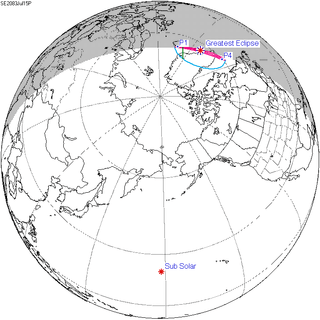 Partial |
123 | January 7, 2084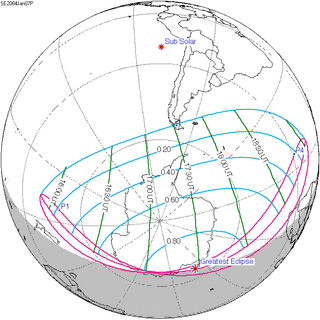 Partial |
| 128 | July 3, 2084 Annular |
133 | December 27, 2084 Total |
| 138 | June 22, 2085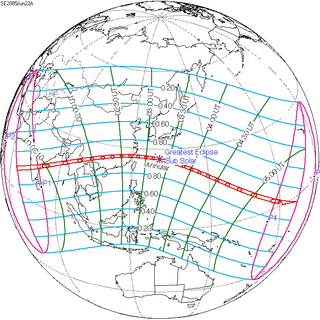 Annular |
143 | December 16, 2085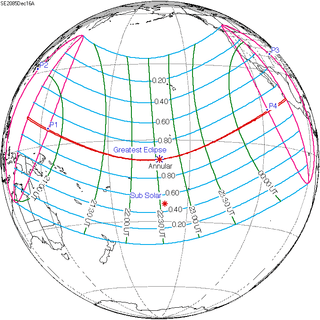 Annular |
| 148 | June 11, 2086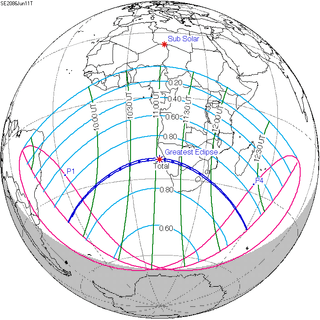 Total |
153 | December 6, 2086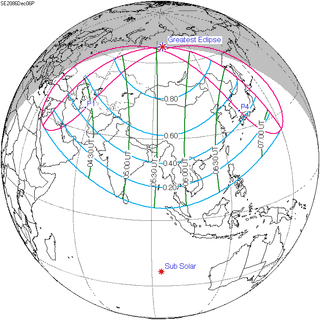 Partial |
| 158 | June 1, 2087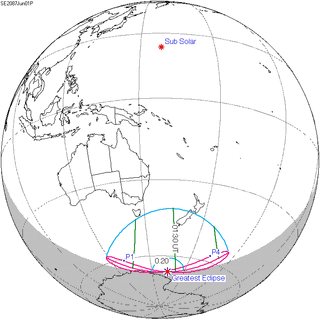 Partial |
Notes
- van Gent, R.H. "Solar- and Lunar-Eclipse Predictions from Antiquity to the Present". A Catalogue of Eclipse Cycles. Utrecht University. Retrieved 6 October 2018.
References
- Earth visibility chart and eclipse statistics Eclipse Predictions by Fred Espenak, NASA/GSFC
.jpg)
